Growing healthy and productive tomato plants all begins on planting day – and by simply avoiding a few of the biggest and most common planting mistakes, you can all but ensure a big harvest of juicy tomatoes this summer!
Tomatoes are by far the most popular vegetable plant to grow in home gardens. The sweet fruits are sought after not only for fresh eating, but for making everything from salsa to hundreds of other tomato based foods.
But whether you grow them in a traditional garden, raised beds or in containers – how and when your put your tomato plants into the soil on planting day can make all the difference between starting your plants down the road to smashing success – or putting them at risk of failure right from the start.
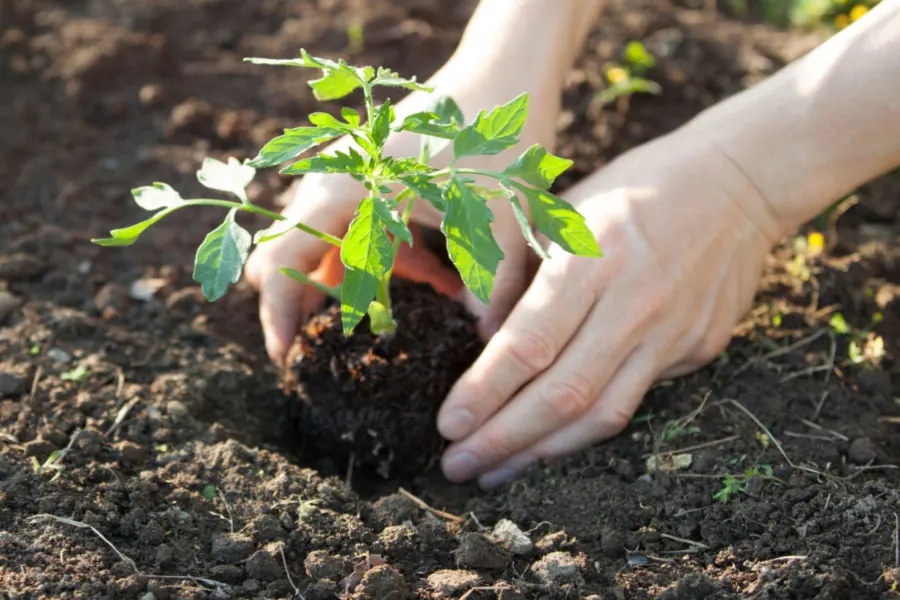
Planting day really does set the stage for how plants will perform in late spring, summer and fall. Putting transplants into their permanent home is quite stressful on the entire plant. From the roots below the soil surface, to the stems and foliage above ground.
But by providing them with the right space and soil conditions, that stress can be minimized. And in the process, have your transplants growing stronger and faster than ever. With that in mind – here is a look at how to avoid six of the most common tomato planting day miscues, and get your plants off to a healthy start!
How To Avoid The 6 Biggest Tomato Planting Mistakes
#1 Planting Early
One of the biggest mistakes of all is jumping the gun and putting your tomato plants in the ground too early. Tomatoes are a warm weather and warm soil crop.
Planting too early can cause a long list of issues for tender, young tomato plants. Both early on – and as the plants mature into mid and late summer. When the soil is still cold, the roots of tomato plants do not act or perform to the best of their abilities.
Because of this, they do not absorb nutrients or water from the soil well. And as they sit and lag in the soil, they also become extremely vulnerable to rot, mold and other disease.
Worse yet, planting too early can leave your plants susceptible to a late frost or even a possible killing freeze. Frosts can injure tender foliage and impact future growth by stunting the plant. If the frost is hard enough or if a freeze occurs, it can actually kill off the entire plant in short order.
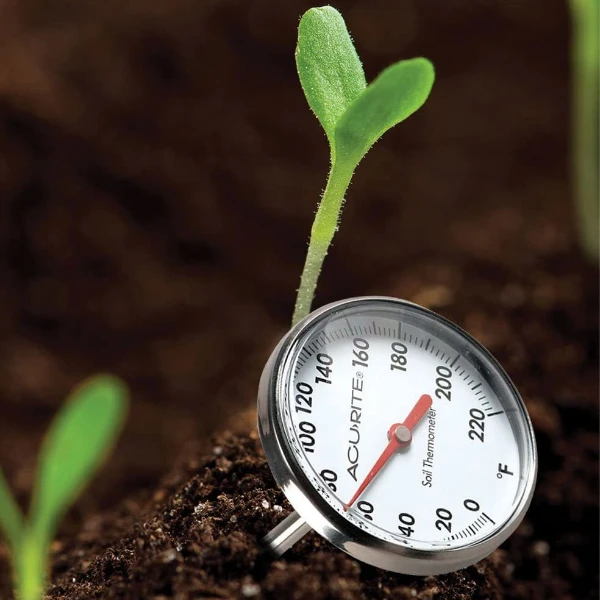
Avoid Planting Early…
Avoid the temptation of planting too early simply because you have had a few warm days. Allow warmer weather to settle in so that soil temperatures can heat up as well. It is important to note that it can take a full week to ten days of 70 to 80 degree daytime temperatures to warm the soil adequately.
For best results, soil temperatures need to be at 60 to 65° before planting. An inexpensive soil thermometer is a great way to check the soil to see if it’s ready. Simply put the probe in the soil to instantly to see the temperature. Affiliate Link : AcuRite Soil Thermometer Probe
As simple as this sounds, planting when the soil is warm will pay huge dividends. A smaller plant planted in warm temperatures will easily outgrow transplants twice its size that were planted in cool soil. Whatever you do, wait until that temperature warms!
#2 Rotating Plants To New Soil – How To Avoid The 6 Biggest Tomato Planting Mistakes
One of the biggest mistakes made in vegetable gardens as a whole is not rotating crops from year to year. And that mistake is amplified when growing tomatoes!
Tomato plants use a tremendous amount of resources from the soil. Unfortunately, if you keep planting your tomatoes in the same space or soil each year, the nutrients they need most are all but depleted from the soil
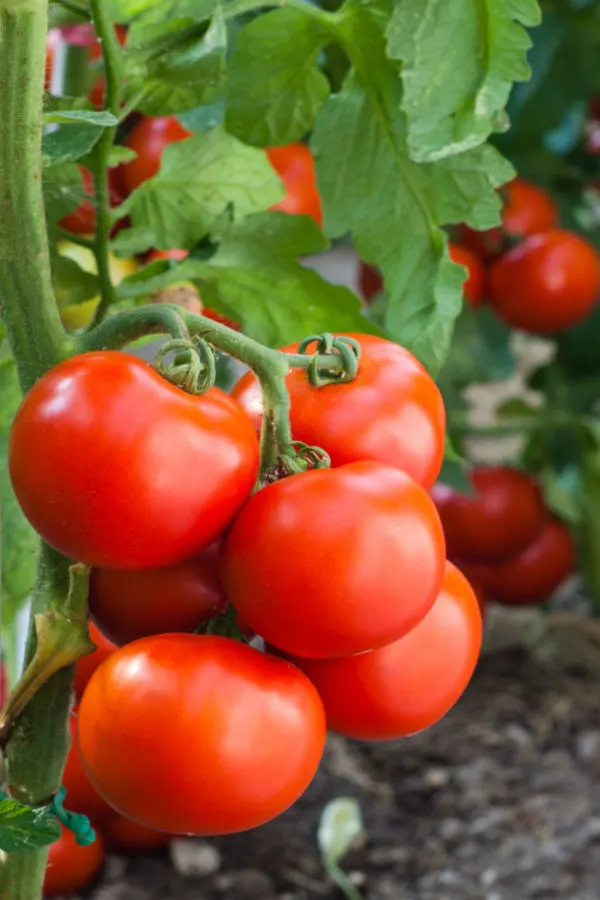
But the news gets worse when planting tomatoes in the same space. Beyond a lack of available nutrients, planting in the same soil leaves tomato plants vulnerable to two of the biggest ailments that affect tomato plants, blossom-end rot and tomato blight.
Blossom rot is due to a deficiency of calcium in the soil. And if tomatoes grow in the same exact soil year after year, the calcium in the soil can be lacking or completely gone. Tomato blight on the other hand, is caused by spores. And once the spores are present in the soil, they can stick around to destroy crops for multiple years.
By simply rotating where you plant tomatoes each year, they can find the nutrients they need. They can also grow in spore free soil to keep disease at bay. This includes changing the soil in containers every single year. See: How To Stop Blossom End Rot On Tomato Plants
#3 Failing To Support Your Plants Before Planting – How To Avoid The 6 Biggest Tomato Planting Mistakes
Before you ever plant your first tomato plant, it is vital to have your tomato support system in place on planting day. Whether it be a stake, a tomato cage, a trellis – or whatever you use to support your tomatoes. Putting stakes and cages in days or weeks after planting is a recipe for disaster.
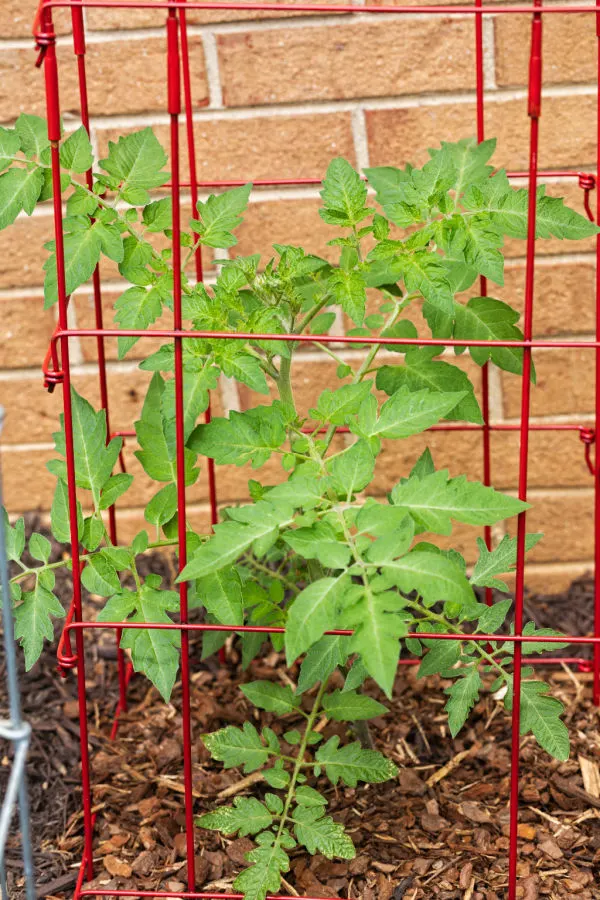
The tender root system of tomatoes needs loose, compaction-free soil. This allows the plant’s roots to easily absorb water, oxygen and nutrients from the soil. If the soil packs down on the roots, it suffocates them.
Waiting until after you plant, or even weeks after you plant to drive in your supports can easily compact the soil around them. Not only might the process damage plants and plant roots as you drive in the supports, the foot traffic compresses the soil area around the roots as you work as well.
Get your support system in before or as you plant. And after that, stay far away from the root zone (18 inches in diameter from the main stem) of your plants when watering, weeding or harvesting. This will keep the soil loose, and the roots free of compaction.
#4 Planting Tomato Roots Shallow – How To Avoid The 6 Biggest Tomato Planting Mistakes
When you do plant your tomatoes, you need to plant them deep! The deeper your roots can grow, the more easily they will develop strong, healthy, and resilient roots. Planting deep also allows plants to have less chance of drying out and more ability to absorb nutrients.
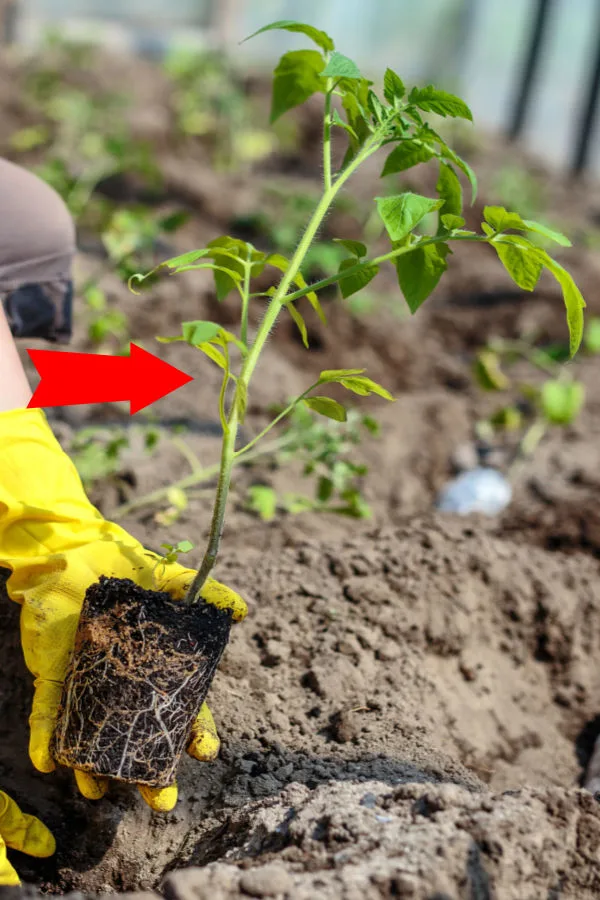
Forget shallow three to four inch holes that barely cover the top soil level of your tomato transplants! Instead, dig down eight to ten inches to create your planting holes. To make this part easy, use a post hole digger, which can create a nice, wide deep hole in seconds.
Finally, before you plant your tomato plant in the hole, it’s important not to commit then next common mistake on our list – failing to fill your planting hole with power!
#5 Failing To Fill Your Planting Hole With Power – How To Avoid The 6 Biggest Tomato Planting Mistakes
As mentioned earlier, tomato plants consume a lot of nutrients from the soil. And that is exactly why it is vital to give them a big dose of power right as you plant them!
Fill your planting hole with compost, worm castings, crushed egg shells and coffee grounds to accomplish this. A cup or two of compost will help provide energy and help plants absorb moisture. A quarter cup of worm castings will do the same and release their energy slowly as the plant grows. Affiliate Product Link: Worm Castings
Listen To Our Podcast On How To Fertilize Tomatoes For Success!
Three to four crushed egg shells will help provide calcium to your tomato plant as it grows. This is pivotal for eliminating blossom rot. Calcium also helps develop strong cell structure in the stems. See: How To Use Egg Shells In The Garden For Big Success
And how about the coffee grounds? A few tablespoons of coffee grounds can help power your tomato plants with a low dose of nitrogen and other trace minerals. They also help retain moisture, helping keep plants hydrated.
Mix all of those powerful materials with the soil in the planting hole as you plant your transplants. Plant them down far enough that you cover the first two sets of leaves. All along the buried stem, new roots will grow off to absorb even more energy and water from the soil.
#6 Failing To Mulch – How To Avoid The 6 Biggest Tomato Planting Mistakes
Last but not least, don’t forget to mulch your tomato plants! And not just with a couple inches of mulch, but with a thick, protective layer four to six inches deep.
Leaving soil bare around your plants will cause all types of serious issues for your plants. For one, it dries the soil and roots of the plants out at a rapid rate. And tomato roots need their moisture! Mulch also regulates the soil temperature, keeping it from soaring or plummeting on cold or hot days.
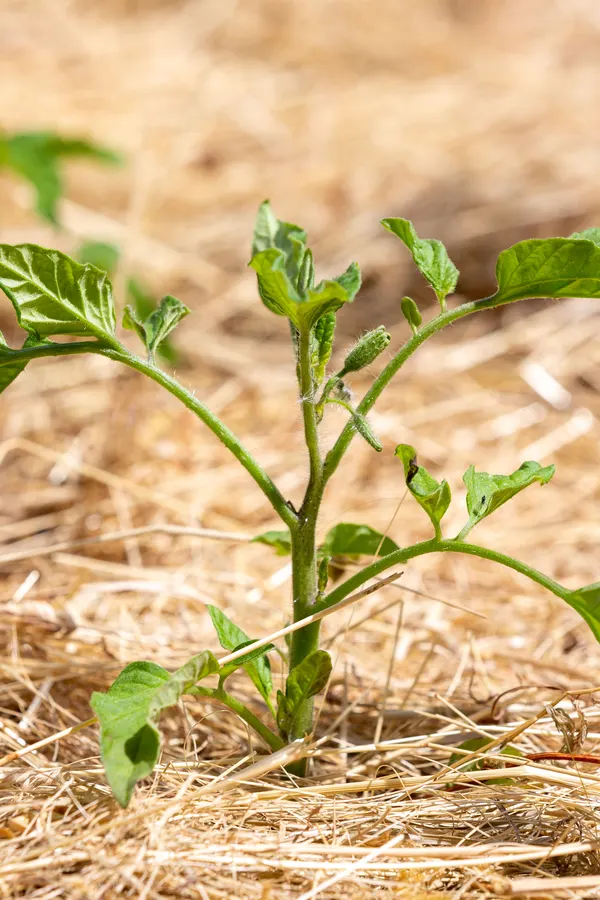
Failing to mulch also allows competing weeds to easily move in. As weeds take hold, they steal moisture and nutrients from the soil, and away from your tomato plants.
Mulch tomato plants with a thick coating of straw, shredded leaves or compost to help insulate and protect plants as they grow. A few inches on container tomato plants is equally important to help insulate plants. Here is to planting your tomato plant with success – and to a big harvest this year as well!
Follow Our Facebook Page For Great Gardening Tips And Advice! This Is My Garden Facebook Page
This Is My Garden is a garden website created by gardeners, for gardeners. Jim and Mary Competti have been writing gardening, DIY and recipe articles and books and speaking for over 15 years from their 46 acre Ohio farm. They publish three articles every week, 52 weeks a year. Sign up today to follow via email, or follow along!
